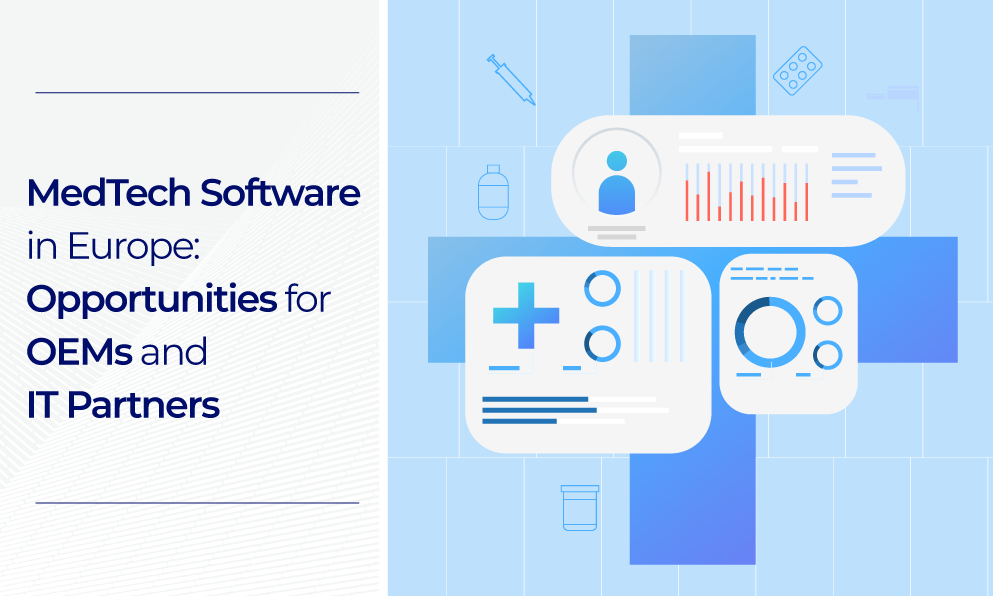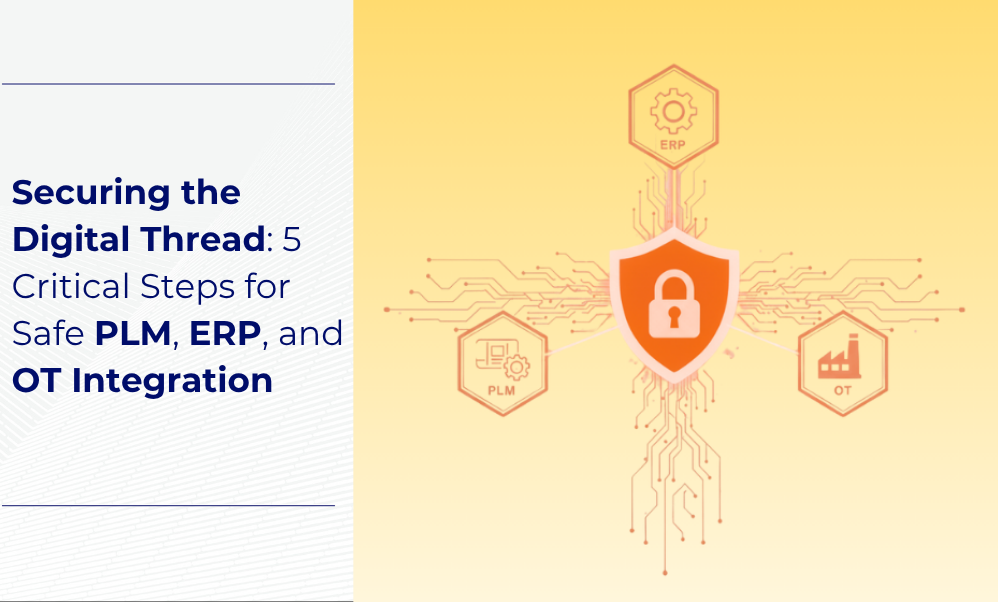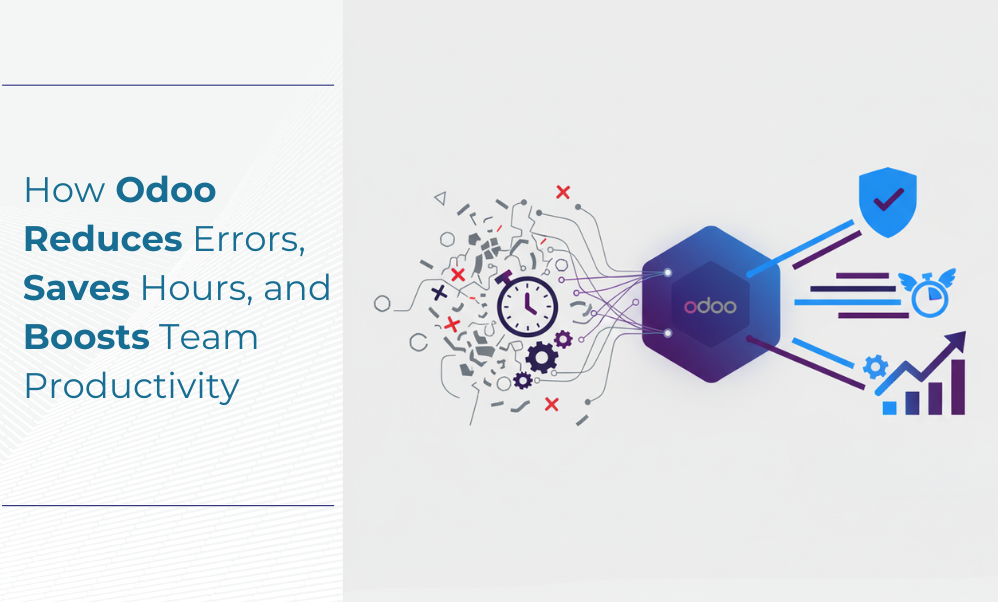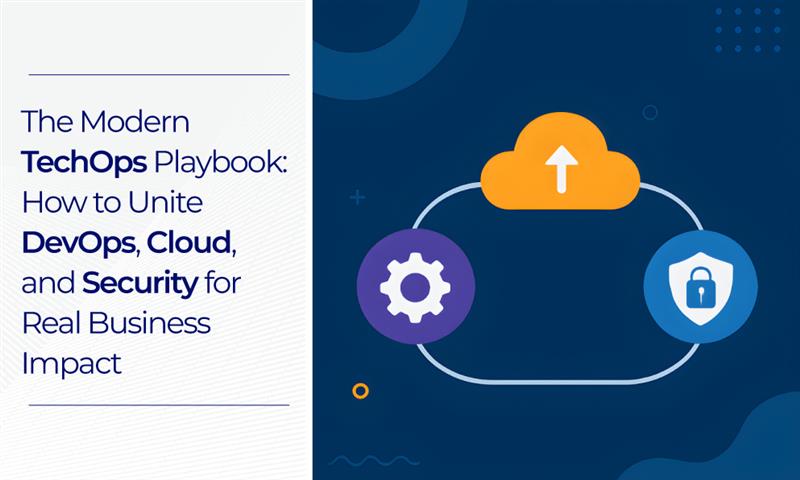Introduction
The European healthcare sector is transforming, and software is at the heart of it.
The Europe Software as a Medical Device (SaMD) market alone is skyrocketing, projected to jump from US$ 440 million in 2024 to US$ 1.4 billion by 2033—a massive 14.0% CAGR. The entire European medical device market is on a similar path, set to exceed US$ 227 billion by 2033.
For Original Equipment Manufacturers (OEMs), the message is clear: the future is no longer just in hardware. It’s in smart, connected, software-driven ecosystems.
But this digital wave brings both immense opportunities and significant challenges. The transition from a hardware-centric model requires new strategies for technological agility and regulatory hurdles. This guide explores the key opportunities for MedTech OEMs in Europe and how a strategic IT partner can help you win.
As a global IT leader with over 1000+ projects delivered for Fortune 100 companies, BJIT specializes in navigating complex, regulated industries. We bring the deep domain expertise in complex compliance standards—combined with a strategic European nearshoring model—to help you accelerate innovation and ensure compliance from day one.
Partner with BJIT to build your compliant MedTech solution.
The Multi-Billion Dollar Opportunity: Why Software is Booming
Several key forces are driving this market growth. Understanding them is key to aligning your products with market demand.
- An Aging Population Demands Smarter Care: Europe's aging population and the rise of chronic diseases require solutions for continuous management. This is where Remote Patient Monitoring (RPM), digital therapeutics, and AI-driven predictive analytics create immense value.
- The Shift to Value-Based Healthcare: The focus is moving from fee-for-service to value-based care, where reimbursement is tied to patient outcomes. MedTech software is central to proving efficiency and clinical results.
- Telehealth is the New Normal: The pandemic cemented telehealth and RPM as mainstream healthcare components. This has created a vast market for connected devices, secure cloud platforms, and intuitive apps that turn data into clinical insights.
The 5 Key Challenges Every MedTech OEM Faces (And How to Solve Them)
Capitalizing on this boom isn't easy. OEMs face unprecedented hurdles that can slow innovation and block market entry. Here is how a strategic partner like BJIT provides a direct solution:
- The Regulatory "Great Wall": Adhering to stringent EU regulations (like MDR/IVDR) and data privacy laws (like GDPR) is a massive, resource-intensive hurdle.
- How BJIT Solves This: Our teams are deeply versed in MedTech and other regulated industries. We build compliance and documentation (backed by our ISO 27017 certification for information security) directly into the development lifecycle, ensuring your product is built on a foundation of regulatory readiness.
- Rigorous Software Lifecycle Demands: Implementing and documenting the mandatory software lifecycle processes for medical devices are complex and time-consuming.
- How BJIT Solves This: We are experts in managing the full software development lifecycle. We don't just deliver code; we deliver a fully documented, auditable, and compliant process using agile methodologies, complete with risk management and robust quality assurance, ready for regulatory review.
- Notified Body Bottlenecks: A shortage of notified body capacity can lead to major delays in certification, stopping your product launch in its tracks.
- How BJIT Solves This: Speed-to-market is critical. Our agile nearshoring model accelerates your development, getting your compliant product and technical file ready faster. This lets you get in the queue for review sooner, minimizing costly delays.
- Intense Competition: The market is crowded with agile startups that can often move faster than established OEMs.
- How BJIT Solves This: We provide the agility you need. Our strategic partnership with Etteplan and access to 750+ engineers gives you a flexible, scalable team. You get the speed of a startup without the overhead, allowing you to innovate and iterate faster.
- Constant Budget and Timeline Pressures: All of these challenges must be managed within tight budgets and demanding project timelines.
- How BJIT Solves This: Our nearshoring model is designed for efficiency. You get access to top-tier, specialized engineering talent at a predictable and optimized cost, ensuring you meet your budget and timeline goals without sacrificing quality.
4 Ways to Unlock New Revenue with MedTech Software
By embracing software, you can move beyond hardware sales, create recurring revenue, and deliver enhanced clinical value. Here are the four biggest opportunities.
1. Launch Standalone Software as a Medical Device (SaMD)
SaMD allows you to create high-margin, scalable software products (like diagnostic apps or AI algorithms) that aren't tied to a specific piece of hardware. This is a powerful way to build a recurring revenue stream.
- How BJIT Helps: We provide robust, high-quality, and compliance-focused software solutions, ensuring your SaMD is built on a foundation of quality and security for a faster time-to-market.
2. Integrate AI and Machine Learning
Transform your devices from data-gathering tools into intelligent clinical decision-support systems. By integrating AI/ML, your product can detect patterns, enhance diagnostic accuracy, and create personalized treatment plans.
- How BJIT Helps: Our proven AI/ML expertise helps you implement predictive analytics and intelligent diagnostic platforms, translating complex algorithms into clinically actionable insights.
3. Build Connected Ecosystems with Interoperability
Data silos are a major barrier to efficient care. The real opportunity is in creating platforms that use modern data standards to aggregate data from multiple sources into a single, actionable view for clinicians.
- How BJIT Helps: We build secure, interoperable platforms that unify data from multiple devices and systems, enabling a truly connected care ecosystem.
4. Build Trust with "Security by Design"
As devices connect, vulnerability increases. Robust cybersecurity is no longer an optional feature—it's a non-negotiable pillar of trust and a core regulatory requirement.
- How BJIT Helps: Our dedicated cybersecurity teams embed security throughout the product lifecycle. Following standards like the OWASP Top 10, we provide security-by-design architecture and penetration testing to protect devices and patient data.
The Strategic Partner Advantage: Why Go It Alone?
Transitioning to a software-driven model is complex. Building a dedicated, in-house team with the required domain expertise in complex regulatory standards and cybersecurity is slow and expensive.
This is where a strategic partner makes the difference. BJIT is a global IT leader with 750+ engineers who have delivered over 1000+ projects for Fortune 100 companies. We specialize in helping regulated industries navigate digital transformation.
For MedTech OEMs, we offer:
- Deep Domain Expertise: Our teams live and breathe the requirements of regulated industries, including data privacy laws like GDPR and HIPAA. We build compliance into the DNA of your product.
- Strategic Nearshoring: With a strong presence in Europe and a strategic partnership with Etteplan, we offer a powerful nearshoring model. You get real-time collaboration and access to top-tier engineers without the barriers of traditional offshoring.
- Full-Spectrum Tech Skills: From custom SaMD and embedded software to AI/ML, cloud DevOps, and cybersecurity, we are your end-to-end development partner.
Here’s how a partnership stacks up against in-house development:
Conclusion: Your Next Step in a Software-First World
The European MedTech landscape is at an inflection point. Software is the key to future growth, enhanced patient outcomes, and sustainable business models.
Successfully navigating this new terrain demands a fusion of clinical insight, technological innovation, and regulatory diligence. You don't have to do it alone.
A strategic tech partner like BJIT provides the expertise, resources, and guidance to turn your ambitious ideas into compliant, market-ready realities.
Ready to accelerate your MedTech innovation?
Contact BJIT today to discuss your project and learn how our strategic tech mapping and nearshoring solutions can help you win in the European market.
References
- Datamintelligence. (2024). Europe Software as a Medical Device Market 2024–2033.
- Market Data Forecast. (2024). Europe Medical Devices Market Forecast 2024–2033.
- United Nations, Department of Economic and Social Affairs, Population Division (2019). World Population Ageing 2019: Highlights (ST/ESA/SER.A/430).











